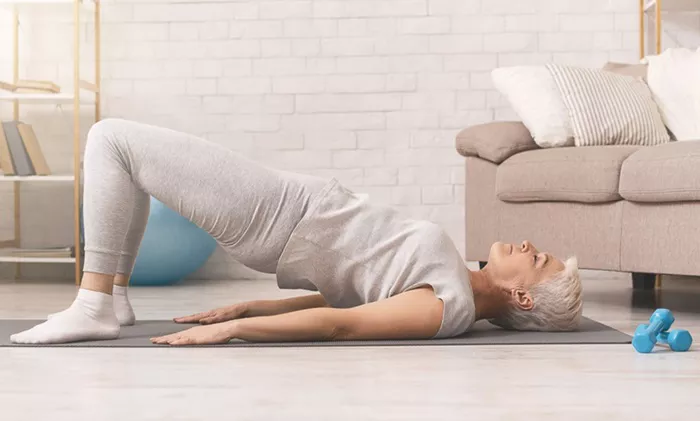A recent study published in the European Journal of Preventive Cardiology has found that high-intensity interval training (HIIT) combined with strength training significantly enhances health markers in older women compared to strength training or moderate-intensity aerobic exercise alone. This research, involving nearly 100 older women, emphasizes the importance of integrating HIIT into regular exercise routines for improved health outcomes.
As women age, they face various health challenges, including diminished mobility, cardiovascular issues, and heightened risks for chronic diseases. Notably, hormonal changes during menopause lead to decreased estrogen levels, adversely affecting bone density and contributing to weight gain, particularly around the abdomen. This accumulation of abdominal fat is linked to an increased risk of heart disease.
To combat these health concerns, physical activity plays a crucial role in promoting better health and reducing disease risk. The study highlights that HIIT is particularly effective in driving meaningful health improvements.
The researchers examined a sample of 92 low-income older women, a demographic typically less engaged in structured exercise programs. Over nine months, participants engaged in one of three exercise regimens twice a week: HIIT with resistance training, moderate-intensity aerobic training with resistance, or strength training alone.
While all groups experienced reductions in waist circumference, only the group performing HIIT combined with resistance training saw significant decreases in systolic blood pressure and arterial stiffness, a risk factor for atherosclerosis. Notably, these positive effects persisted for three months after the training ended.
The researchers propose that these enhancements are due to HIIT’s ability to prompt the cardiovascular system to adjust blood flow during intense bursts of exercise, thus improving heart function.
Previous studies have corroborated HIIT’s benefits for older adults. A 2023 review published in Sports Medicine Open, which analyzed 18 studies, found that HIIT positively impacts mobility compared to traditional moderate-intensity continuous training methods like walking, running, or swimming. Researchers concluded that the interval training model—which combines high-intensity exertion with brief rest periods—leads to better cardiovascular function.
Importantly, the advantages of HIIT extend beyond older adults. A 2021 review assessing various age groups—from adolescents to the elderly—indicated that HIIT not only improves exercise capacity but also enhances enjoyment in physical activity, thereby fostering greater motivation.
For those looking to incorporate HIIT into their fitness routines, experts recommend starting with two to three sessions per week, allowing for at least one recovery day in between. Dr. Cordelia Carter, a sports orthopedic surgery specialist at NYU Langone Health, advises gradually introducing HIIT to avoid undue stress on joints and reduce the risk of injury.
“Short sessions at the beginning, gradually increasing in intensity, can yield substantial benefits over time,” Dr. Carter stated. “It’s essential to build endurance and strength systematically to enhance cardiorespiratory efficiency.”
The findings underscore the value of HIIT as a crucial component of exercise regimens for older women, offering an effective approach to maintaining health and vitality in later life.
Related Topics
Exercise: A Key to Preventing Dementia, Experts Assert
Harnessing Breathwork: A Path to Stress Relief and Mental Clarity


































